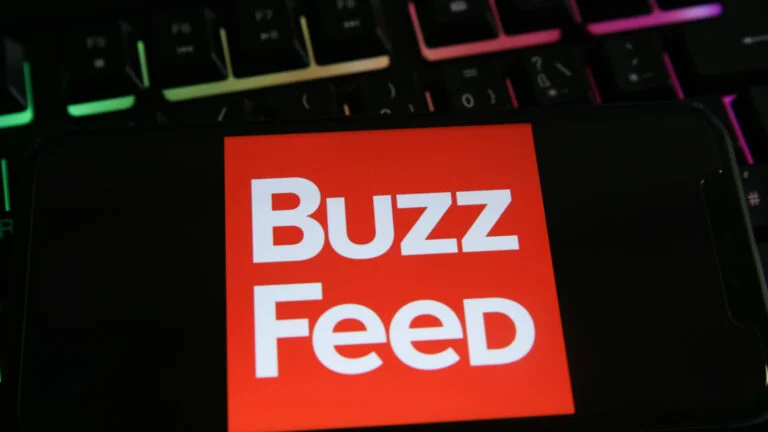In recent months, buzzfeed stock (BZFD) has become a topic of renewed interest among investors. Trading around $2.28, it reflects a turbulent journey since BuzzFeed went public via SPAC in 2021. This article explores the current state of buzzfeed stock, its history, financial health, recent strategies, investor sentiment, and future outlook. With digital media evolving rapidly, understanding buzzfeed stock is crucial for anyone considering speculative yet potentially rewarding opportunities.
The History Behind buzzfeed stock
BuzzFeed went public through a SPAC merger in 2021 at a valuation of $1.5 billion. Initially, buzzfeed stock generated excitement as it symbolized a new era of viral digital media. However, its value soon plummeted, falling over 90% from its debut price.
In 2024, to avoid delisting, the company executed a 1-for-4 reverse stock split. This event highlighted its ongoing financial struggles. Despite the setbacks, BuzzFeed has worked to adapt by focusing on its stronger entertainment and lifestyle segments, leaving behind its now-defunct BuzzFeed News division.
Current Financial Snapshot of buzzfeed stock
Today, buzzfeed stock has a market capitalization of around $85–88 million. Its price-to-earnings ratio is low, hovering around 6.7×, which suggests undervaluation compared to sector averages. The price-to-book ratio is below 1, reinforcing this perception.
BuzzFeed’s Q1 2025 revenue stood near $36 million, while net losses narrowed compared to previous years. Cost cuts and restructuring have improved its margins, raising cautious optimism among investors tracking buzzfeed stock closely.
Strategic Challenges Facing buzzfeed stock
BuzzFeed faces significant hurdles. The closure of BuzzFeed News in 2023 underscored difficulties in monetizing quality journalism. Shifting focus to lighter, shareable content has reduced costs but risks weakening brand trust.
Governance issues persist as well. Activist investor Vivek Ramaswamy holds a notable stake but lacks real influence due to BuzzFeed’s dual-class share structure. Debt and liquidity concerns add further pressure on buzzfeed stock performance.
Opportunities Driving buzzfeed stock Rebound
Despite challenges, buzzfeed stock shows signs of recovery potential. Cost-cutting measures and asset sales have improved profitability. Additionally, BuzzFeed is experimenting with AI-generated content to boost engagement while lowering production costs.
A new proposal to adopt a digital-asset treasury strategy involving Bitcoin and NFTs could diversify revenue streams. If successful, this could attract a fresh wave of investors and redefine buzzfeed stock’s market perception.
Analyst Views and Investor Sentiment
Analyst coverage on buzzfeed stock remains limited but leans optimistic. A recent “Strong Buy” rating cites nearly 80% potential upside, with a target near $4. Institutional ownership is moderate, around 37%, while insider sales indicate mixed confidence.
Upcoming Q2 earnings on August 7, 2025, will likely serve as a key catalyst. Investors are watching closely for updates on AI initiatives, profitability trends, and any moves toward crypto asset strategies.
Risks That Could Impact buzzfeed stock
BuzzFeed remains a high-risk investment. Declining traffic, overreliance on social media platforms, or backlash from AI content could harm its reputation. Governance and debt concerns continue to deter some long-term investors.
While buzzfeed stock may offer upside, its volatility and reliance on speculative strategies make it unsuitable for risk-averse investors seeking stability.
Conclusion
buzzfeed stock is a speculative play at a crossroads. Improved cost control, AI-driven growth, and digital asset strategies offer upside potential. Yet governance issues, debt, and a volatile digital media environment remain major risks. For those comfortable with high-risk, event-driven trades, buzzfeed stock offers a chance at recovery—but clear execution and upcoming earnings will be crucial indicators.
FAQs
1. Why has buzzfeed stock dropped so much since going public?
BuzzFeed’s initial hype faded due to revenue declines, costly acquisitions, and industry shifts away from traditional ad models, leading to significant devaluation.
2. Is buzzfeed stock undervalued now?
With a P/B ratio below 1 and improving margins, some analysts consider it undervalued, but risks remain high due to governance and debt issues.
3. What could drive buzzfeed stock higher?
Improved profitability, AI content monetization, and adoption of a digital asset treasury strategy could help boost investor confidence and stock price.
4. What risks should investors consider?
Key risks include declining audience engagement, balance sheet weaknesses, and limited institutional support due to dual-class share governance.
5. When is the next major update for buzzfeed stock?
BuzzFeed’s Q2 2025 earnings report on August 7 will be a critical update for investors evaluating its short-term direction.
Read Also : Kendrick Lamar Super Bowl: Redefining Halftime History

